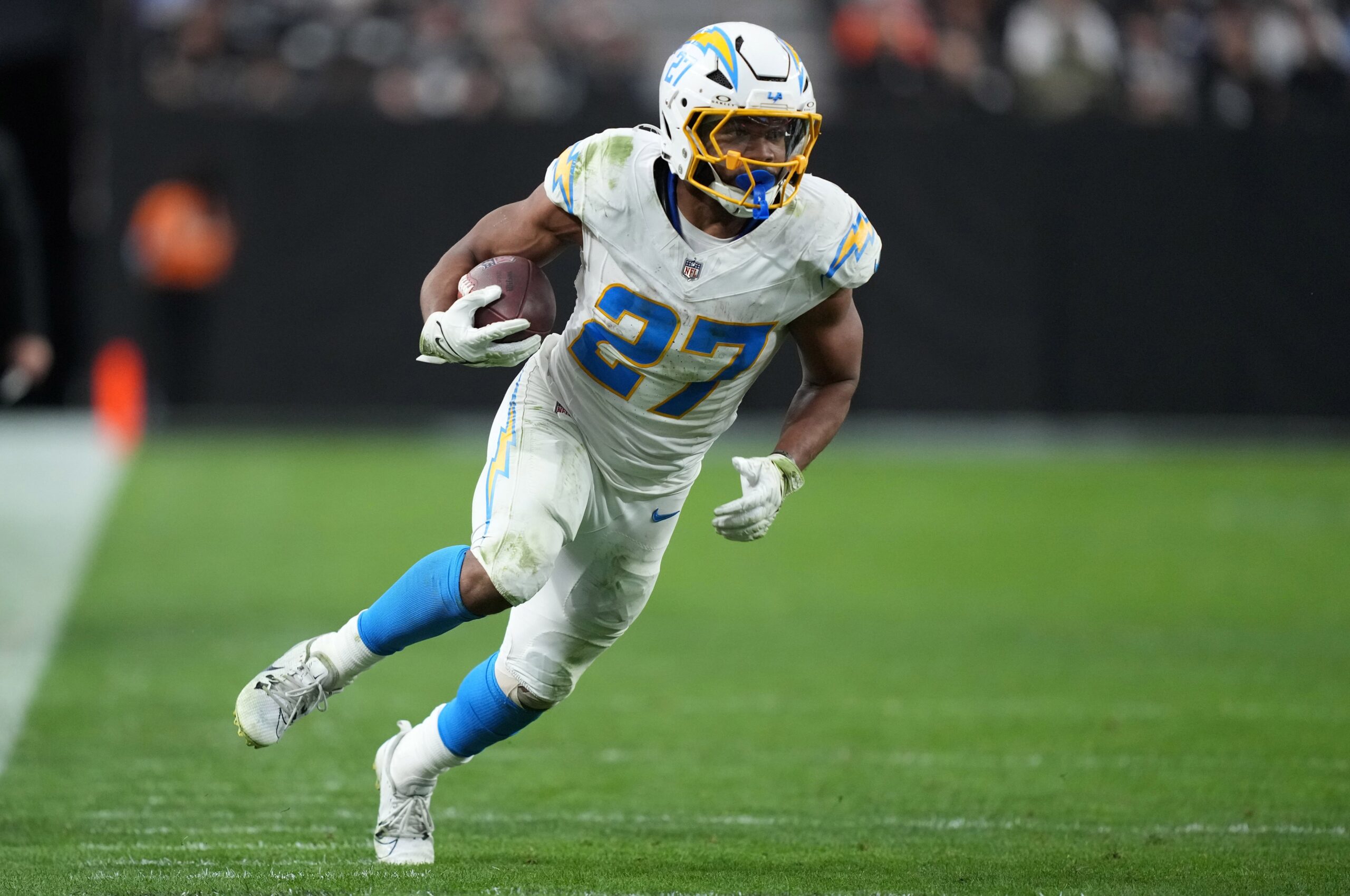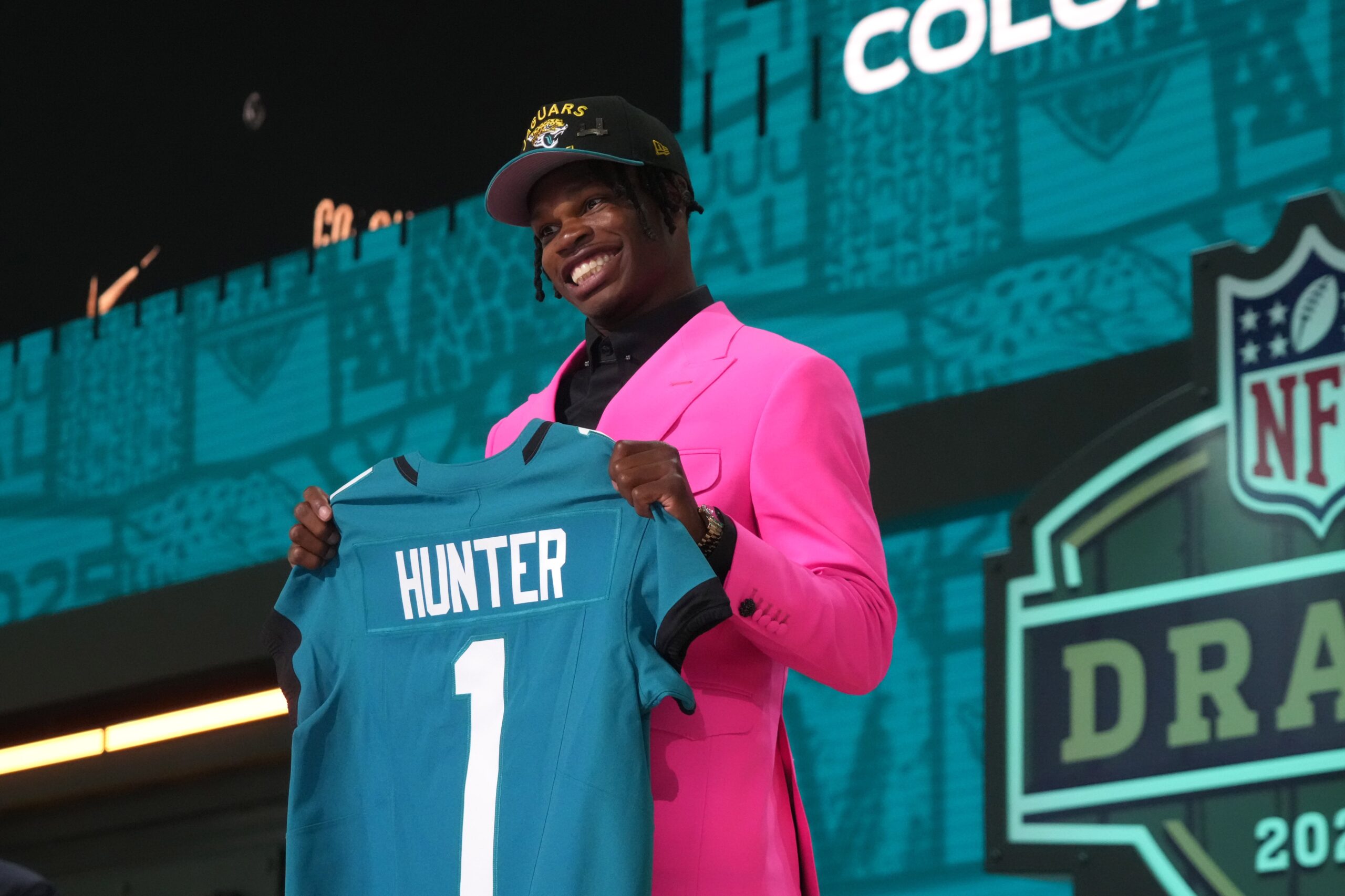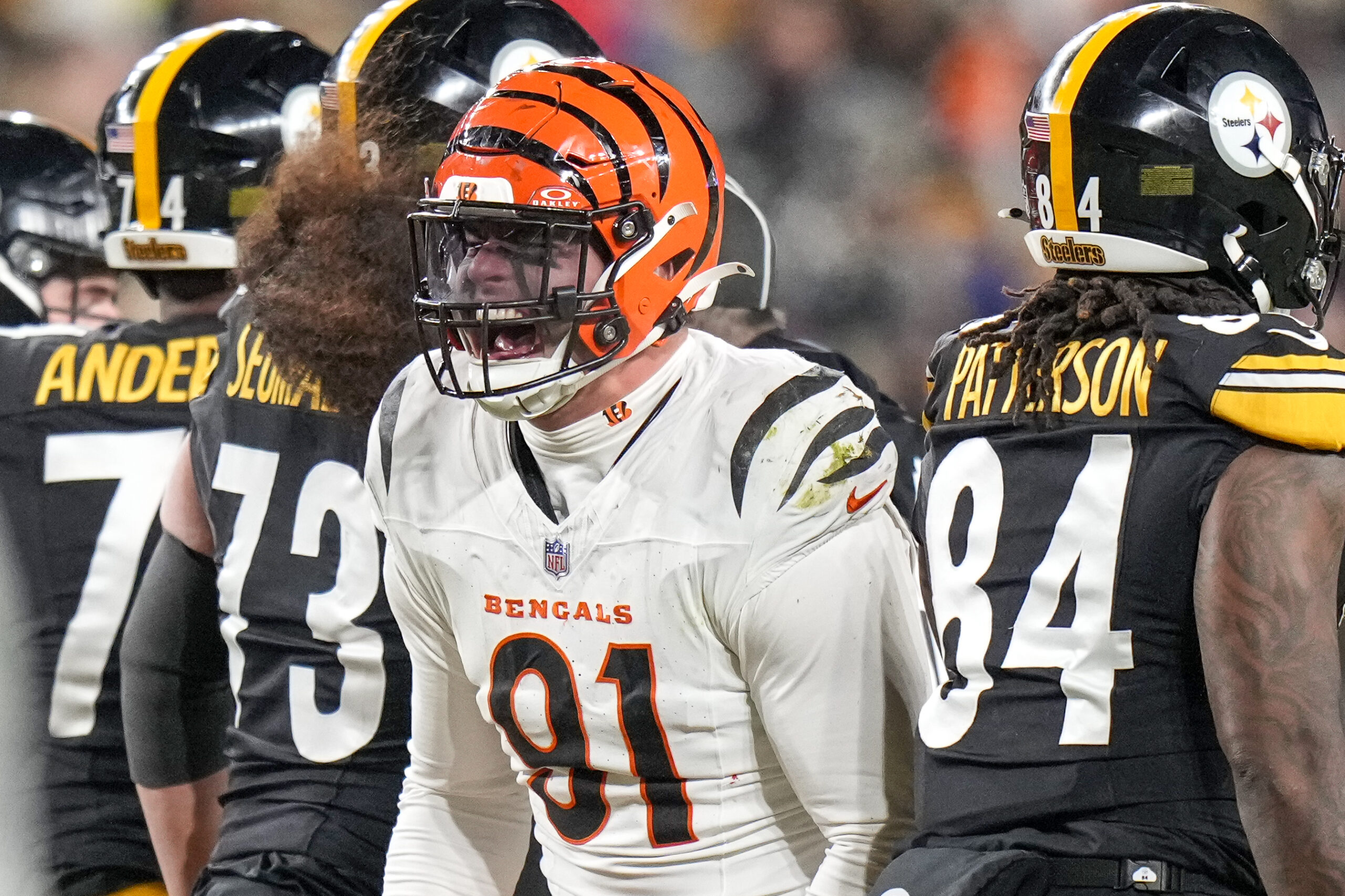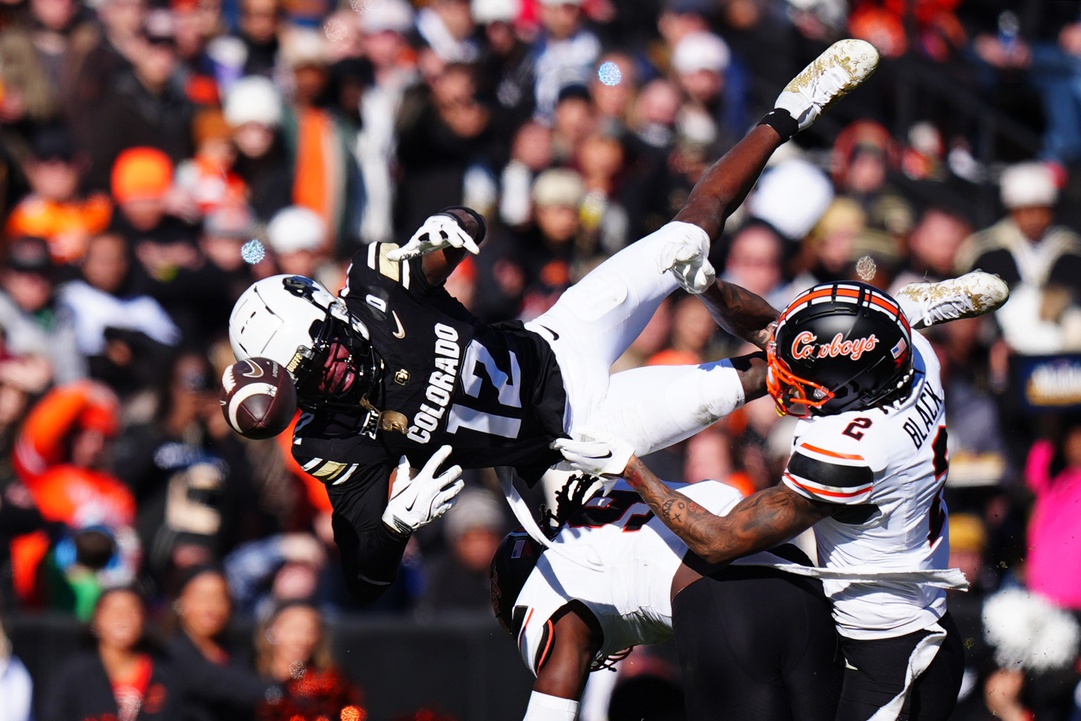NFL Analysis
12/15/23
8 min read
It's Officially Time For Chargers, Brandon Staley To Part Ways
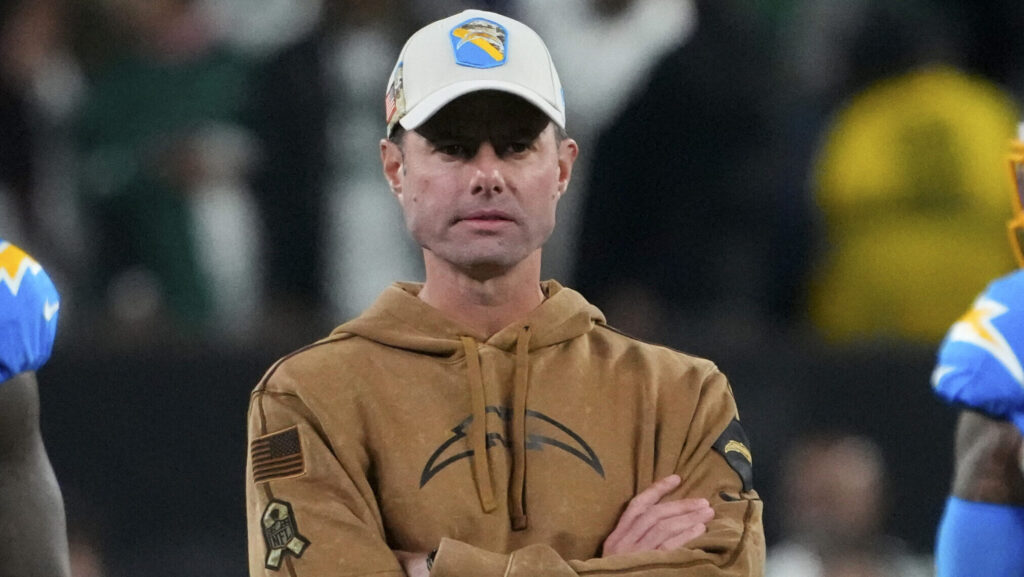
Editor's Note: After publish, the Chargers fired Brandon Staley and GM Tom Telesco on Friday morning.
The Brandon Staley era in Los Angeles has reached its boiling point.
With the Los Angeles Chargers' backs against the wall at 5-8 and Justin Herbert sidelined with a broken finger, the Chargers lost 63-21 to a Las Vegas Raiders squad already down to an interim coach and a rookie backup quarterback.
By the middle of the second quarter, the Raiders' 35 points were the most they had scored all season and came a week after they were shut out by the Minnesota Vikings. For good measure, Las Vegas moved the score to 42-0 before the half. The Chargers played an even 21-21 second half to earn some of their pride back, but there was no forgetting the first 30 minutes of play.
The performance was every bit as bad as the final score makes it seem. After the game, Khalil Mack said tonight was "probably one of the nastiest, ugliest losses of my career."
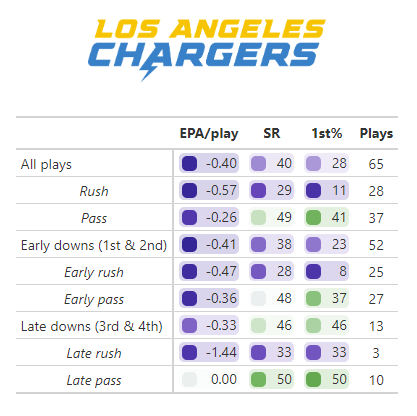
In many ways, this death knell of a loss captures the last year of Chargers football perfectly.
One side of the coin shows all of the misfortunes out of Staley's control.
The offense's stars have fallen one by one in a way that could only happen to the Chargers. Mike Williams suffered a torn ACL in September, thrusting the entire burden of the offense onto Herbert and Keenan Allen. The two made it work for the better part of three months, but now Herbert is done for the season. And Allen missed Thursday night's game with a heel injury.
A once star-studded trio built to carry the offense instead became Easton Stick, Quentin Johnston and Joshua Palmer. Bundle that with a rushing attack that's been sluggish all year and you get an offense that has no mode for moving the ball down the field consistently.
None of that even begins to dive into the hellish turnover spree Los Angeles suffered. Stick was strip-sacked twice, once for a scoop-and-score. RB Joshua Kelley coughed the ball up once in the first quarter. Punt returner Darius Davis fumbled on a return in the second quarter. And to open the fourth quarter of this unending nightmare, Stick threw a pick-six on a screen.
The Raiders recovered all of those fumbles in Chargers territory, too. Maybe you could pin the poor execution on coaching, to a degree, but four fumbles all recovered by the defense and a pick-six screen is a telltale sign that it's just not your day.
The other side of the coin shows the other side of the ball.
It's fair to point out that constantly starting defensive drives on your own side of the field is no way to live, but you have to get a stop at some point. Los Angeles, at least in the first half, couldn't seem to find a way to do that.
No matter what Las Vegas called, the team found the end zone. Its second, third and fourth touchdowns summed that up succinctly.
On the Raiders' second touchdown of the night, QB Aidan O'Connell hit Tre Tucker for a deep strike from 30 yards out, thanks to a perfectly designed concept to attack the Chargers' coverage. Tucker ran a bending post route from the No. 2 spot from the trips side of the formation, but it was Jakobi Meyers' in-breaking route as the inside receiver that drew down the Chargers' safety. The safety, Alohi Gilman, triggered on Meyers' route, giving Tucker an ocean of space in the end zone.
The following drive, Meyers straight up beat CB Michael Davis on a fade route from a tight split vs. man coverage. Myers stacked himself over Davis with ease, and O'Connell laid a perfect ball out to him at the pylon. Simple as that.
A few drives later, after Davis' fumble on the punt return, the Chargers blew a coverage in the red zone.
Las Vegas called a boot-action play into the boundary from 11 yards out. Gilman fired down to defend the run straight away, either as an auto-check to the Raiders' motion or because the run fake involving the puller was too convincing not to believe. Either way, Gilman let TE Michael Mayer run free to the flat and waltz in for maybe the easiest touchdown he will ever score.
It's one thing to get caught in a bad coverage look, lose a 1-on-1 matchup or blow a coverage, but to suffer all of those mistakes in quick succession for touchdowns is hard to overlook and overcome.
That's the micro view of what's gone wrong in Los Angeles. '
A season's worth of stress and misfortune and poor timing boiled down to 60 minutes of ball. But that view serves as a lens into the bigger picture of how the Chargers arrived here in the first place.
As mentioned before, there's nothing Staley or the Chargers could really do about the injuries to key players. Williams being out from the season hurt them from the jump, and Herbert's broken finger nuked any shot they had of recovering the season. Even C Cory Linsley, a stabilizer for this offense up front, has missed a large portion of the season with heart problems. You can't even place that one under the team's typical injury woes.
It's not just injuries from this season, either.
Many of the Chargers' theoretical stars have not played up to their standard this season — in part because of their health history.
LT Rashawn Slater, a second-team All-Pro as a rookie, has not looked the same after tearing a tendon in his bicep last year. DE Joey Bosa is no longer the Pro Bowl–caliber player he once was, thanks to an accumulation of injuries throughout the years; he is once again on IR right now.
The same sentiment goes for S Derwin James, who is really supposed to be the skeleton key for this defense. RB Austin Ekeler falls into a similar category on offense.
And that doesn't even include starting S Nasir Adderly suddenly retiring in March, forcing Gilman into a starting role.
There isn't a roster in the league that could withstand all of its stars coming to a crash all at once. It's too much to bear.
None of that necessarily excuses Staley from the Chargers arriving here, though. Unlucky as it may be, the buck has to stop somewhere.
Letting a weird season slip away isn't cause to be fired in and of itself, but letting a weird season slip away and nearly surrendering the points record to a rookie fourth-round pick at quarterback might be. A loss like this is the crescendo to a building frustration over the course of a disappointing season.
You could give Staley a pass for all of it in his first season, and even his second to a degree. But by Year 3, any coach would be expected to produce results.
The Chargers haven't, especially on the defensive side of the ball, where they carry one of the most expensive defensive rosters in the NFL this year. Heading into this week, the Chargers ranked 29th in yards allowed (4,876) and 27th in yards per play allowed (5.6). Last season, the Chargers ranked 20th in yards allowed (5,884) and 29th oi yards per play allowed (5.9).
It's more than likely that we have seen the last of Staley as the Chargers' coach. If that's the case, he'll finish his tenure at a dead-even 24-24 in the regular season. A painful loss to the Jaguars will be his only postseason appearance.
It's not bad, it's not triumphant. It's just a perfectly OK tenure that came to a whimpering end.
On that note, it's important to remember this has been Staley's first time as a head coach and his ascension into that spot was unprecedented. Staley was coaching at John Carroll in Division III as recently as 2016. He spent a short three years as an NFL position coach under Vic Fangio and one season as the Los Angeles Rams' defensive coordinator before catapulting into one of the 32 toughest jobs in the sports world.
All of that is to say that this should not be the end of Staley in the NFL. It shouldn't even necessarily be the final chance he gets to be a head coach. He was a bright young coaching prospect just three years ago.
Defensive coaches tend to take a long time to find themselves and really settle into being staples in this league as it is. Most of the ones who get head coaching jobs have bounced around all over the league as coordinators, seeing all types of players and solving all sorts of different problems as they put together their rolodex of schematic answers. Staley never really got that luxury.
For now, a proper divorce is best for both Staley and the Chargers.
Both parties need to start anew. It's hard to imagine this will be the last we have seen of Staley, though. This is his chance to go back to the drawing board, find himself as a coach and take some time to truly settle into the NFL without the pressures of being a head coach.


